Burning the Midnight Oil
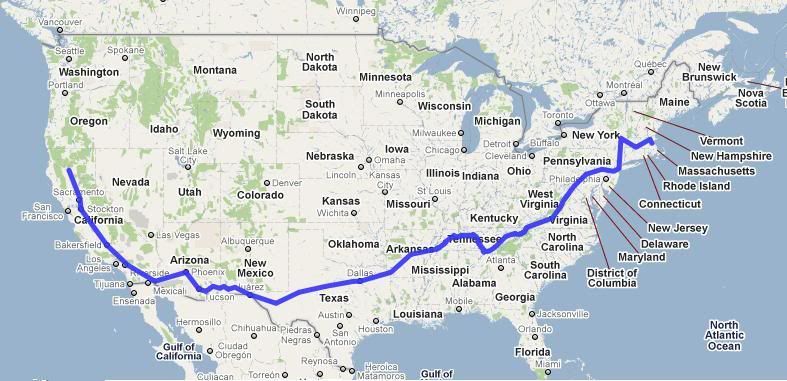 (Right: Liberty Line) The Steel Interstate proposal is an effort to build Rapid Electric Freight Rail Tollways across the country ~ east to west and north to south ~ to:
(Right: Liberty Line) The Steel Interstate proposal is an effort to build Rapid Electric Freight Rail Tollways across the country ~ east to west and north to south ~ to:
- Take a substantial slice our of our oil imports
- Insure our national economy and national defense against disruptions of our oil supply
- Increase the productivity of our manufacturing and logistics sectors,
- Overcome decades of neglect of our national electricity transmission infrastructure, and
- Protect our legacy investment in our Interstate Highway system from the battering it receives at the hands of long haul trucks.
The point of the Steel Interstate system is that it is a system: it consists of several parts that work together to give more bang for the buck than any one could provide on its own.

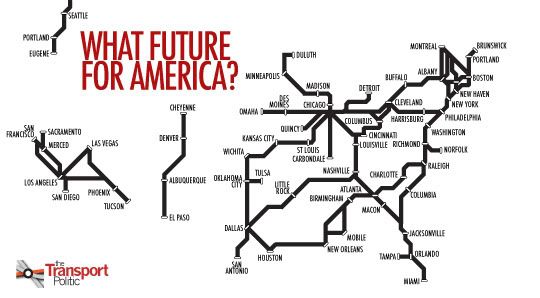 Way back before the Super Bowl, the White House had a series of exciting announcements, covered at
Way back before the Super Bowl, the White House had a series of exciting announcements, covered at  The flashy rail projects are the very HSR projects to build bullet trains serving urban areas with millions of people.
The flashy rail projects are the very HSR projects to build bullet trains serving urban areas with millions of people. I’ve written several times about the direct potential of the Steel Interstate project to cut our oil imports by 10% by getting long haul freight trucking off the road. It would at the same time relieve the crushing burden imposed by long haul trucking on our over-worked, under-maintained Interstate, National and State highways, help get renewable energy resources from places that they are to places people need electricity, and of course support long distance Rapid Passenger Rail offering dramatically improved reliability and transit speed, supporting operating surpluses with multiple services per day.
I’ve written several times about the direct potential of the Steel Interstate project to cut our oil imports by 10% by getting long haul freight trucking off the road. It would at the same time relieve the crushing burden imposed by long haul trucking on our over-worked, under-maintained Interstate, National and State highways, help get renewable energy resources from places that they are to places people need electricity, and of course support long distance Rapid Passenger Rail offering dramatically improved reliability and transit speed, supporting operating surpluses with multiple services per day.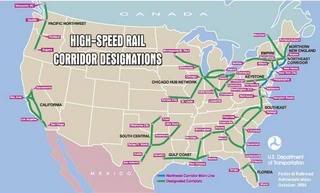 Last week I
Last week I  I noted
I noted 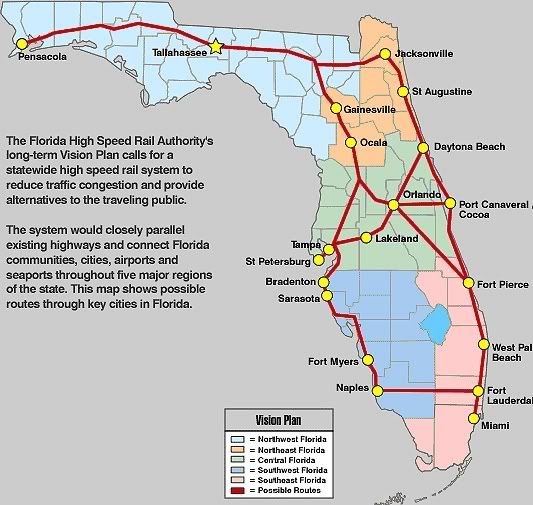 Disclaimer: Nothing said here should be taken to imply that airport/train connections are the primary transport task for either light rail, mass transit, conventional intercity rail, or high speed intercity rail. In other words, the focus of an essay in a regular weekly series on one particular topic does not imply anything along the lines of “most important thing”.
Disclaimer: Nothing said here should be taken to imply that airport/train connections are the primary transport task for either light rail, mass transit, conventional intercity rail, or high speed intercity rail. In other words, the focus of an essay in a regular weekly series on one particular topic does not imply anything along the lines of “most important thing”. Huh, seems me that whatever the state of my various concerns, the agenda of the Sunday Train has been taken over by the White House … funny how announcing the recipients of a total of $8b will do that.
Huh, seems me that whatever the state of my various concerns, the agenda of the Sunday Train has been taken over by the White House … funny how announcing the recipients of a total of $8b will do that.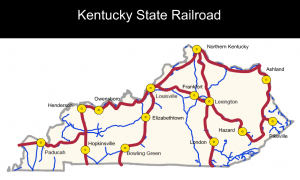 Doctor Dan Mongiardo, Kentucky’s Lieutenant Governor, has announced that he is running for the Democratic nomination for the Kentucky Senate race, to take on whoever wins the Republican nomination to challenge for the seat that Senator Bunning (R-Big$$$) has announced he is giving up.
Doctor Dan Mongiardo, Kentucky’s Lieutenant Governor, has announced that he is running for the Democratic nomination for the Kentucky Senate race, to take on whoever wins the Republican nomination to challenge for the seat that Senator Bunning (R-Big$$$) has announced he is giving up. Last year, I told VP Joe Biden about the Sustainable Electric High(er) Speed Rail I wanted for Christmas (cf. links below). It involved electrifying the 30,000+ miles of STRACNET, and establishing 100mph Rapid Freight Rail paths, including support for running 110mph or 125mph long haul electric passenger services on the Rapid Freight paths.
Last year, I told VP Joe Biden about the Sustainable Electric High(er) Speed Rail I wanted for Christmas (cf. links below). It involved electrifying the 30,000+ miles of STRACNET, and establishing 100mph Rapid Freight Rail paths, including support for running 110mph or 125mph long haul electric passenger services on the Rapid Freight paths. Let construction or upgrade of a rail corridor be proposed, and almost immediately the cry goes up, “but we can’t afford it! It costs too much!”.
Let construction or upgrade of a rail corridor be proposed, and almost immediately the cry goes up, “but we can’t afford it! It costs too much!”.